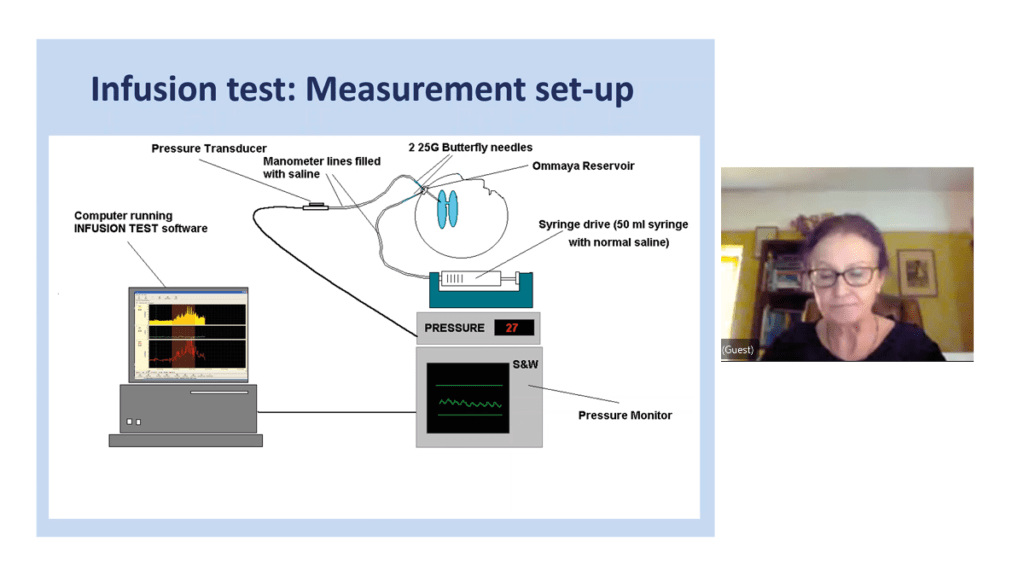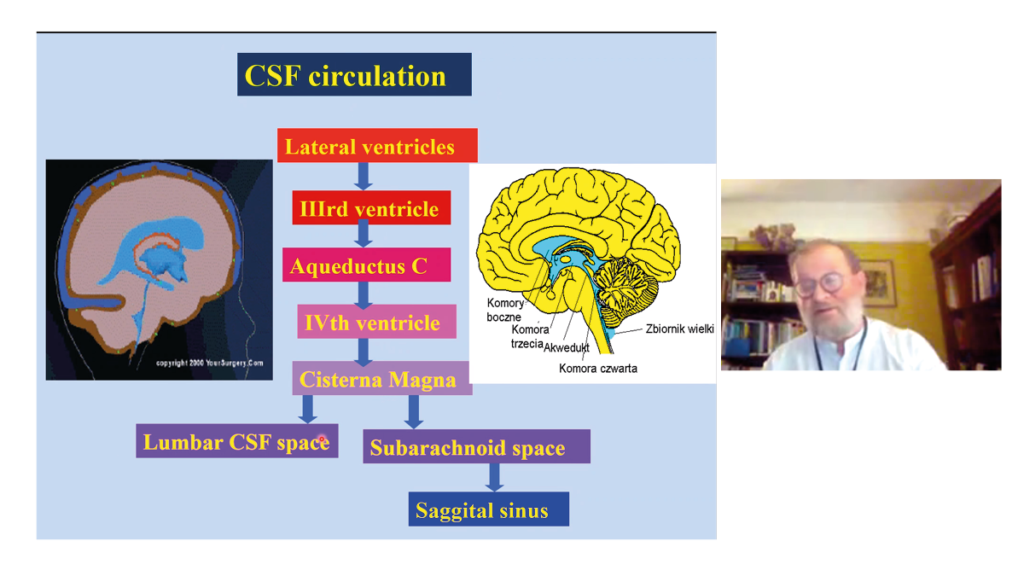Professor Marek Czosnyka and Doctor Zofia Czosnyka recently delivered a training seminar on cerebrospinal fluid (CSF) dynamics. The virtual seminar was delivered to neurosurgical registrars and REVERT project partners.

An overview of cerebrospinal fluid dynamics
Prof. Czosnyka began the session with an overview of CSF dynamics. He explained that hydrocephalus is far more complex than simply a disorder of the CSF circulation, delving into the causes and effects of the condition and discussing important models and studies.
Carrying out infusion tests
Next, Dr Czosnyka explained how to carry out an infusion test, including the equipment needed. The infusion test is used to measure mean intracranial pressure (ICP), heart rate, pulse amplitude of ICP, and RAP index. By using the ICM+ neuromonitoring software developed by the Brain Physics Laboratory, the person carrying out the test can generate reports to send these values to the patient’s consultant neurosurgeon, helping them to diagnose CSF disorders.
Shunt technologies
Prof. Czosnyka also talked about the many shunt technologies that are used to treat hydrocephalus and other disorders, which can include membrane valves, programmable valves, and ball on spring valves. He compared the advantages and disadvantages of various shunt types. For example, some programmable valves are sensitive to external magnetic fields and could therefore be re-adjusted by accident.
Test de dérivation in vivo
Dr Zofia Czosnyka next talked about shunt testing in vivo, a minimally invasive test. After shunting, the model of CSF circulation changes. She answered questions such as: how do ICP pulsations influence drainage through the shunt? How does the shunt influence ICP pulse pressure? Dr Czosnyka also explained how to test for shunt underdrainage, overdrainage and ventricular blockages.
Shunt testing saves Addenbrooke’s hospital an estimated £1m per year by avoiding unnecessary shunt revision surgery, making it an important part of ongoing patient care.

Prof. and Dr Czosnyka closed the training seminar by answering questions from participants, which led to some lively discussions.
